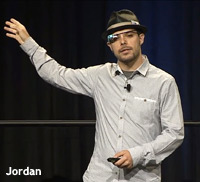Google Plans To Transition Brands Into Content-Driven Advertising
- by Laurie Sullivan @lauriesullivan, May 16, 2013

Executives at traditional brands are aware of the shifts in advertising, said Bob Goodman, senior vice president and director of user experience at Arnold Worldwide. "They can't afford to ignore it," he said. "They're all looking for help in understanding what it means for them and how to improve on connecting with consumers."
In Google's world, search and paid search continue to support apps and utilities as the underlying technology, the reference design. Consumers won't type a query, but rather indicate or imply the need for information through clicks on photos or interactions with contextual content.
A click turns into a conversation and every page becomes a form of search, Goodman said. "You may not perceive yourself as performing a search, but rather navigating through content during your everyday life," he said. "Marketers need to think more about the assets they can leverage to make use of content."
Brands need to broaden their notion of the meanings of "advertising" and "media." Technologies like Google Glass and Google Now, as well as apps like Google Maps, transition the ad industry into the era of content-driven advertising. Content in multiple forms that can move across screens with contextual relevance will become crucial to the way brands reach consumers. Google isn't the only engine moving in this direction. Bing and Yahoo have begun to make changes too, but they have yet to become as vocal.
That transition began when Google served the first answers to queries in the search results, rather than required searchers to click on the link that took them to a page, according to Raymond James Analyst Aaron Kessler. Ultimately, Google gets paid for sending traffic to other sites, so they will likely want to continue using that model, he said. It allows Google to move farther down the funnel to offer information similar to travel comparison sites. You can make a similar argument for other publishers, he said, pointing to Facebook's recent Atlas acquisition to improve attribution tracking.
Krishna Subramanian, CMO at Velti, said the next generation of online advertising points to multiscreen advertising, which will lower acquisition costs for gaining new customers. "Google Glass will provide the location-based data that gets tied back into ad targeting," he said. "People initially talked about serving coupons to a consumer standing in front of a Starbucks, but the real value will become tying together all the data to identify the daily path they travel and the frequency in which they do it."



Now the real challenge is getting the client on board along with the planners and the buyers that are purchasing the media; to understand & how to measure the medium.
The digital agencies; get it -- it's the traditional agencies that need more educating. Even some of the sellers are a little confused.
We are in the digital age that goes beyond Nielsen rating points.
Couldn't agree more - content-rich advertising is what drives consumers to engage, whether it be within a rich media ad or branded social app. We have recently teamed with Google to push owned content sources like YouTube playlists, articles, recipes, photos, breaking news, etc. to the consumer within innovative ad units and the performance has been noticeably higher.